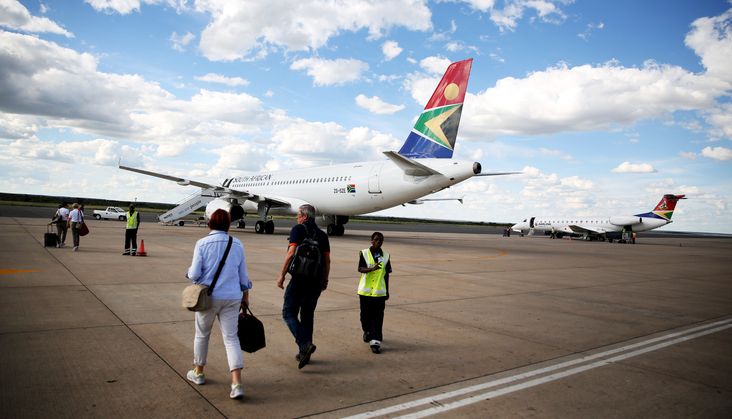The state-owned national carrier is suffering, and even its own optimistic predictions do not call for a return to profitability for at least the next two years.
With billions of dollars in debt and a record of opaque decisions and political interference, government-owned national carrier South African Airways (SAA) is under threat. Reforming SAA and other parastatals puts President Cyril Ramaphosa in a tight squeeze: the economy is suffering and investors want to see improvements in that area, but the governing African National Congress’s leftist base is opposed to job cuts and privatisations, and national elections are planned for May.
SAA chief executive Vuyani Jarana, who was a veteran senior executive at telecoms company Vodacom, has the task of managing SAA’s multi-year turnaround. That means improving the company’s supply contracts, possibly selling off subsidiaries like Air Chefs and cutting loss-making routes. He told local media: “We are going to review the business model and ask: ‘What are the things we can do that we can be great at, and what are the things we are not great at that we can let go?’”
SAA estimates it has the funds to keep running until June 2019
Jarana’s goal is to make the company profitable by 2021, as the firm has been making losses and relying on government bailouts since 2011. The government upped its guarantees for SAA in the 2019 State of the Nation address given by Ramaphosa in February. SAA estimates that it has the funds to keep running until June of this year, but it is likely to need more government money and to roll over its commercial bank loans due this year in order to move forward with its plans.
Early days
Reorganisation is the name of the main game. Jarana announced in February that SAA will split its internal operations into three parts to make the company more nimble in its main areas of focus: the domestic, regional and international markets. But analysts like Wits University’s Jannie Rossouw warn that changes to the way SAA manages the unpredictability of fuel prices and its wage bill will need to be addressed for the government’s current plans to be fruitful.
If SAA enters a better glide path, the government might consider selling some of its stake in the company on the stock market to raise more funds. But the early days are showing that it will be difficult to keep the government on message. In October, public enterprises minister Pravin Gordhan announced that SAA does not have the means to launch any new routes. In November 2018, finance minister Tito Mboweni said SAA should be shut down.
Then on a trip to India in January 2019, President Ramaphosa said that SAA should relaunch its flights from Johannesburg to Mumbai. Former public enterprises minister Barbara Hogan told the Zondo Commission, which is investigating ‘state capture’ by private interests, that SAA was pressured to drop the India route for the benefit of people connected to former president Jacob Zuma – a claim that they deny.
Making SAA run like a company – as state-run Ethiopian Airlines has shown can be possible and profitable – rather than a strategic state asset or a source of patronage will take the buy-in of the wider government, SAA’s senior leadership and the workers who make sure that the planes fly on time.
Understand Africa’s tomorrow… today
We believe that Africa is poorly represented, and badly under-estimated. Beyond the vast opportunity manifest in African markets, we highlight people who make a difference; leaders turning the tide, youth driving change, and an indefatigable business community. That is what we believe will change the continent, and that is what we report on. With hard-hitting investigations, innovative analysis and deep dives into countries and sectors, The Africa Report delivers the insight you need.
View subscription options

